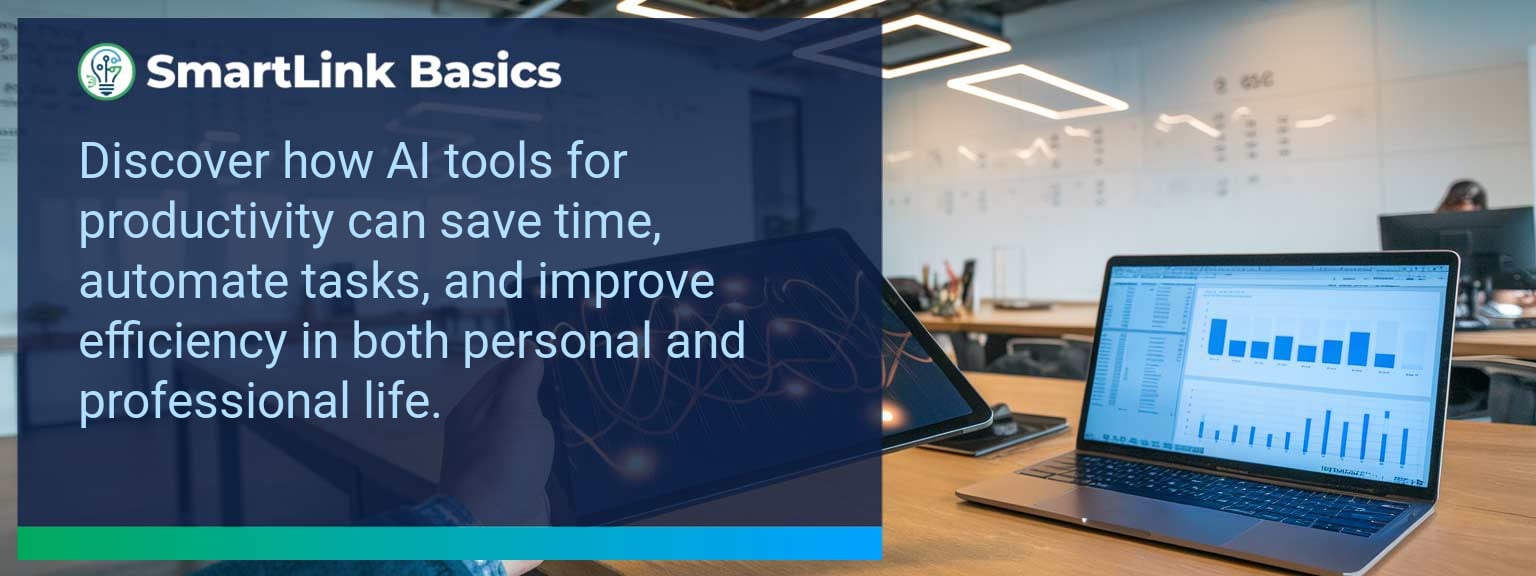Accenture reports that up to 40% of working hours can be automated with existing AI technologies. For sales leaders, this presents a direct opportunity to reclaim time for high-value activities instead of getting buried in repetitive admin. At SmartLink Basics, we specialize in helping decision-makers integrate AI tools for productivity into their workflows to increase efficiency, shorten sales cycles, and drive revenue.
This article breaks down the challenges sales teams face with time management, highlights the most effective AI time management tools and AI task automation strategies, and provides a clear framework you can deploy within 90 days. You’ll see how applying practical automation delivers measurable gains while setting your organization up for the next wave of intelligent productivity software.
- AI tools reduce manual scheduling and task management efforts
- Automating repetitive workflows increases productive selling time
- Data-driven prioritization improves decision-making speed
- Integration with CRM ensures consistent follow-ups and pipeline health
- Real-time analytics support smarter resource allocation
The Struggle with Time Management and Repetitive Tasks
Even seasoned sales teams lose hours each week to manual scheduling, data updates, and redundant reporting. While each task may be small, the accumulated time drain reduces selling capacity and delays key decisions. A sales executive juggling 12 active opportunities might spend up to 90 minutes weekly just logging activity, a process that could be handled by AI task automation. The actionable step is to audit your team’s recurring low-value activities and map them to existing AI scheduling tools or time tracking apps that integrate with your CRM.Leveraging AI Tools for Productivity to Streamline Processes
Deploying AI tools for productivity means selecting software that directly aligns with your revenue operations. For example, AI time management tools can auto-prioritize opportunities based on buyer signals, while task automation systems trigger follow-up emails without human intervention. A SaaS company that implemented AI-powered workflow automation cut deal cycle time by 17%, simply by automating proposal generation and contract routing. Start by identifying 2–3 high-frequency workflows and applying AI solutions with measurable time savings in mind.Measurable Gains in Efficiency and Task Completion
AI-driven workflow automation delivers both immediate and cumulative impact. Sales leaders often see email follow-up rates improve by 25% when tasks trigger automatically after prospect engagement. For example, an enterprise team using AI scheduling tools reduced meeting booking delays from three days to under four hours. That acceleration has a direct correlation with pipeline momentum. The takeaway: track key leading and lagging indicators to validate AI’s ROI and reinforce adoption across your team.| Category | Metric | Definition | Target |
|---|---|---|---|
| Leading | Time Saved per Rep/Week | Hours freed from automation vs. baseline | 4–6 hours |
| Lagging | Deals Closed per Quarter | Number of opportunities converted into sales | +15% YoY |
| Quality | Follow-up SLA Compliance | % of tasks completed within set timeframe | 90%+ |
Evolving AI Capabilities for Smarter Productivity
AI features are becoming more anticipatory, using predictive analytics to suggest next actions, restructure daily agendas, and dynamically adjust priorities based on pipeline health. This reduces cognitive load for sales leaders and ensures teams focus energy where returns are highest. As capabilities grow, the integration between productivity software, CRM, and communication tools will create a unified command center for sales execution. To stay ahead, keep one experimental slot in your tech stack reserved for testing promising AI scheduling tools before they become mainstream.Get the 90-day plan, coaching rubric, and dashboard template to operationalize AI in your enablement program.









